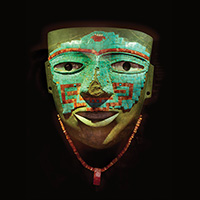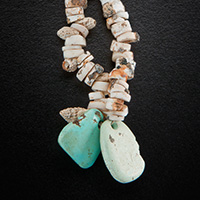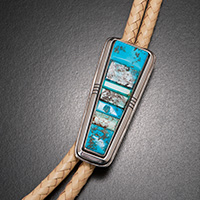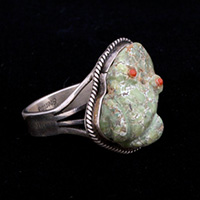The Stone:
Turquoise in the World
Turquoise has long been valued in many places. Early turquoise mines were located in Egypt, Iran, and China, all locations where turquoise was used and treasured. Turquoise earrings were found in a 5,000- year-old burial from Egypt and it was one of the stones decorating King Tutankhamen’s gold funeral mask. Middle Eastern cultures and those in western Asia likewise view the stone as both decorative and important. In the Near East, the powers of turquoise are believed to include healing and warding ill fortune.
Tibetan folklore features turquoise as a prized material, ranked with gold, silver, and lapis lazuli. It is such an integral part of the culture that the term “turquoise” is sometimes used instead of “sky blue.” Lakes, wells, flowers, and even animals are described as being “turquoise.”
In the European Middle Ages, turquoise was reputed to help win friends and ensure health and happiness. It was a potent love charm. The color of the stone was believed to indicate the health of its owner, fading when death approached and, sometimes, miraculously reviving when given to a new, healthy owner.
In Mesoamerica, turquoise was esteemed above other gemstones — only jade rivaled its importance. The Aztec term Chalchihuitl is often translated as turquoise, although others believe it to be jade. Mount Chachihuitl is the largest ancient mine in the Cerrillos District, near Santa Fe, and may have been named by Mexicans who accompanied the Spanish into New Mexico.
Turquoise was considered precious by the cultures of Mesoamerica. Large quantities were used to create mosaics on masks and other objects by the Aztecs, their neighbors, and predecessors. (Photograph courtesy El Camino Real Historic Trail Site (NM/DCA))



